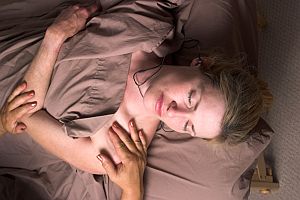 Swedish massage is perhaps the most widely known and frequently requested full-body massage technique. The interesting thing is that the name “Swedish massage” itself is only used in countries that speak English or Dutch, and also in Hungary. In fact, the name is not used in Sweden. In most parts of the world, this technique is called “classic massage.”
Swedish massage is perhaps the most widely known and frequently requested full-body massage technique. The interesting thing is that the name “Swedish massage” itself is only used in countries that speak English or Dutch, and also in Hungary. In fact, the name is not used in Sweden. In most parts of the world, this technique is called “classic massage.”
The term “Swedish massage” is a bit of a misnomer for another reason as well—the technique is not thought to have originated in Sweden or even to have been created by a Swede! Many books on massage wrongly attribute the technique to Per Henrik Ling, an early 19th century Swedish physical therapist and an instructor of medical gymnastics. The confusion may have originated with the name “Swedish Gymnastic Movement System”, a set of techniques that Ling himself actually did create.
Swedish or classic massage involves long fluid movements of the hands across the body combined with circular motions, as well as other techniques such as kneading, chopping and vibration. It helps to improve circulation and to soften muscle tissue, making it perfect for relaxation. Swedish massage methods can be particularly useful when used before more intense techniques, like deep tissue massage. This helps to warm up the body and prepare it for more forceful methods.
The five basic movements of Swedish or classic massage are
- Effleurage—characterized by long, sliding or gliding motions of the hands from the neck to the sacrum at the base of the spine, and along other parts of the entire body. This gentle technique helps greatly with relaxation.
- Petrissage—a kneading motion where muscles are tenderly rolled and compressed. This helps to restore circulation deep within the muscles—circulation that has been restricted by tension.
- Tapotement—this is very much like a karate chop. This tapping action can be particularly helpful on tense, twitching or cramped muscles.
- Friction—with thumb pads or fingertips, the massage therapist applies greater pressure, especially near joints and alongside the spine. This helps to get rid of knots in the muscles, allowing greater flexibility.
- Vibration/shaking—this involves shaking, rocking or trembling movements of a limb in order to loosen the body as a whole and to decrease overall tension.
Besides being a popular aid that promotes relaxation, Swedish massage can alleviate joint stiffness and reduce pain. This massage technique has also been effective in helping patients with osteoarthritis of the knee, leading to improved function in as little as eight weeks.
For full-body health, Swedish or classic massage can be performed in tandem with other drug-free methods such as chiropractic adjustments, not only to repair the body, but also as part of a broader health maintenance regimen.














